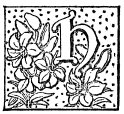
Sacred Texts Legends and Sagas Celtic Prophecy Index Previous Next
Buy this Book at Amazon.com

Prophecies of the Brahan Seer, by Alexander Mackenzie, [1899], at sacred-texts.com
 |
might, from the appearance of the country, with its chain of great inland lakes, predict the future Caledonian Canal. Among others which might safely be predicted, without the aid of any supernatural gift, are, "that the day will come when there will be a road through the hills of Ross-shire from sea to sea, and a bridge upon every stream". "That the people will degenerate as their country improves." "That the clans will become so effeminate as to flee from their native country before an army of sheep." Mr. Macintyre supplies the following version of the latter:--Alluding possibly to the depopulation of the Highlands, Coinneach said "that the day will come when the Big Sheep will overrun the country until they strike (meet) the northern sea". Big sheep here is commonly understood to mean deer, but whether the words signify sheep or deer, the prophecy has been very strikingly fulfilled. The other two have also been only too literally fulfilled.
Mr. Macintyre supplies another version, as follows: "The day will come when the hills of Ross will be strewed with ribbons". It is generally accepted that this prediction finds its fulfilment in the many good roads that now intersect the various districts of the country. Other versions are given, such as 'a ribbon on every hill, and a bridge on every stream' (Raoban air gach cnoc agus drochaid air gach alltan); 'a mill on every river and a white house on every hillock' (Muillinn air gach abhainn agus tigh geal air gach cnocan); and 'that the hills of the country will be crossed with shoulder-halts' (criosan guaille). Since Kenneth's day mills were very common, and among the most useful industrial institutions of the country, as may be evidenced by the fact that, even to this day, the proprietors of lands, where such establishments were once located, pay Crown and Bishop's rents for them. And may we not discover the fulfilment of
[paragraph continues] "a white house on every hillock" in the many elegant shooting lodges, hotels, and school-houses now found in every corner of the Highlands.
Mr. Maclennan supplies the following:--There is opposite the shore at Findon, Ferrintosh, two sand banks which were, in the time of the Seer, entirely covered over with the sea, even at the very lowest spring ebbs. Regarding these, Coinneach said, "that the day will come, however distant, when these banks will form the coast line; and when that happens, know for a certainty that troublesome times are at hand". "These banks," our correspondent continues, "have been visibly approaching, for many years back, nearer and nearer to the shore." This is another of the class of predictions which might be attributed to natural shrewdness. It is being gradually fulfilled, and it may be well to watch for the "troublesome times," and so test the powers of the Seer.
Other predictions of this class may occur as we proceed, but we have no hesitation in saying that, however much natural penetration and shrewdness might have aided Kenneth in predicting such as these, it would assist him little in prophesying "that the day will come when Tomnahurich," or, as he called it, Tom-na-sithichean, or the Fairy Hill, "will be under lock and key, and the Fairies secured within". It would hardly assist him in foreseeing the beautiful and unique cemetery on the top of the hill, and the spirits (of the dead) chained within, as we now see it.
Since the last edition of the "Prophecies" appeared, our attention has been called to the following paragraph published in the Inverness Advertiser, in 1859; that is before it had been turned into a Cemetery--"Tomnahurich, the far-famed Fairies' Hill, has been sown with oats. According to tradition, the Brahan prophet who lived 200 years ago,
predicted that ships with unfurled sails would pass and repass Tomnahurich; and further, that it would yet be placed under lock and key. The first part of the prediction was verified by the opening of the Caledonian Canal, and we seem to be on the eve of seeing the realization of the rest by the final closing up of the Fairies' Hill." This paragraph was in print before the prediction was fulfilled.